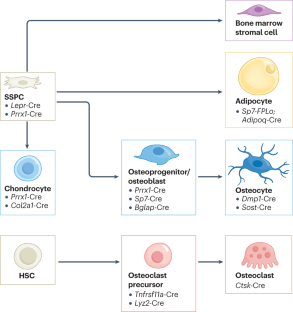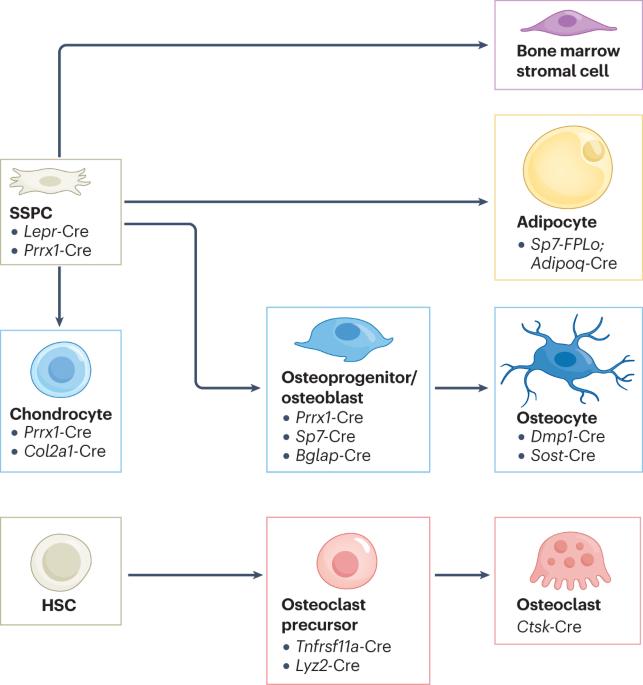Metabolic regulation of skeletal cell fate and function
IF 3.7
3区 医学
Q2 CHEMISTRY, MEDICINAL
引用次数: 0
Abstract
Bone development and bone remodelling during adult life are highly anabolic processes requiring an adequate supply of oxygen and nutrients. Bone-forming osteoblasts and bone-resorbing osteoclasts interact closely to preserve bone mass and architecture and are often located close to blood vessels. Chondrocytes within the developing growth plate ensure that bone lengthening occurs before puberty, but these cells function in an avascular environment. With ageing, numerous bone marrow adipocytes appear, often with negative effects on bone properties. Many studies have now indicated that skeletal cells have specific metabolic profiles that correspond to the nutritional microenvironment and their stage-specific functions. These metabolic networks provide not only skeletal cells with sufficient energy, but also biosynthetic intermediates that are necessary for proliferation and extracellular matrix synthesis. Moreover, these metabolic pathways control redox homeostasis to avoid oxidative stress and safeguard cell survival. Finally, several intracellular metabolites regulate the activity of epigenetic enzymes and thus control the fate and function of skeletal cells. The metabolic profile of skeletal cells therefore not only reflects their cellular state, but can also drive cellular activity. Insight into skeletal cell metabolism will thus not only advance our understanding of skeletal development and homeostasis, but also of skeletal disorders, such as osteoarthritis, diabetic bone disease and bone malignancies. The skeleton is a metabolically active organ, with bone formation and maintenance relying on highly anabolic, nutrient-consuming processes. Here, the authors describe the current understanding of fuel selection and intermediary metabolic pathways in bone cells during bone formation and discuss how metabolic dysfunction can contribute to skeletal disease.


骨骼细胞命运和功能的代谢调节
成年后的骨骼发育和骨骼重塑是一个高度合成代谢的过程,需要充足的氧气和营养供应。骨形成的成骨细胞和骨吸收的破骨细胞密切相互作用,以保持骨量和骨结构,它们通常位于血管附近。发育中的生长板内的软骨细胞可确保骨骼在青春期前延长,但这些细胞在无血管环境中发挥作用。随着年龄的增长,大量骨髓脂肪细胞出现,通常会对骨骼特性产生负面影响。许多研究现已表明,骨骼细胞具有与营养微环境及其特定阶段功能相对应的特定代谢特征。这些代谢网络不仅为骨骼细胞提供充足的能量,还提供增殖和细胞外基质合成所需的生物合成中间产物。此外,这些代谢途径还控制氧化还原平衡,以避免氧化应激,保障细胞存活。最后,一些细胞内代谢物可调节表观遗传酶的活性,从而控制骨骼细胞的命运和功能。因此,骨骼细胞的新陈代谢状况不仅反映了细胞状态,还能驱动细胞活动。因此,深入了解骨骼细胞的新陈代谢不仅能增进我们对骨骼发育和平衡的了解,还能增进我们对骨关节炎、糖尿病骨病和骨恶性肿瘤等骨骼疾病的了解。
本文章由计算机程序翻译,如有差异,请以英文原文为准。
求助全文
约1分钟内获得全文
求助全文
来源期刊
CiteScore
7.90
自引率
7.30%
发文量
215
审稿时长
3.5 months
期刊介绍:
Chemical Research in Toxicology publishes Articles, Rapid Reports, Chemical Profiles, Reviews, Perspectives, Letters to the Editor, and ToxWatch on a wide range of topics in Toxicology that inform a chemical and molecular understanding and capacity to predict biological outcomes on the basis of structures and processes. The overarching goal of activities reported in the Journal are to provide knowledge and innovative approaches needed to promote intelligent solutions for human safety and ecosystem preservation. The journal emphasizes insight concerning mechanisms of toxicity over phenomenological observations. It upholds rigorous chemical, physical and mathematical standards for characterization and application of modern techniques.

 求助内容:
求助内容: 应助结果提醒方式:
应助结果提醒方式:


